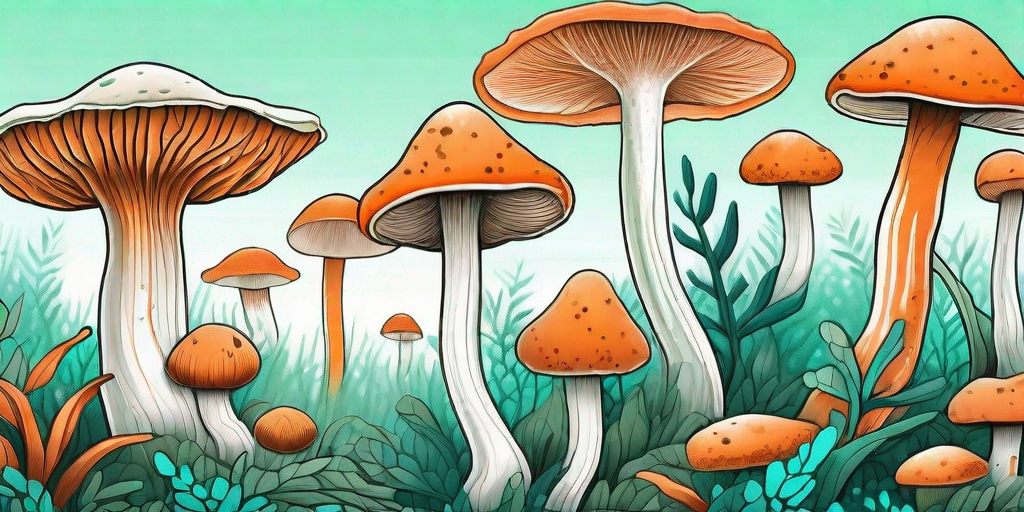
Welcome, brave explorers, to the vibrant and often misunderstood world of orange fungus. This is not a journey for the faint-hearted, but for those with a thirst for knowledge and a penchant for the peculiar, you're in for a treat. So, buckle up, and let's dive into the captivating, colorful, and sometimes creepy world of orange fungi.
The Basics: What is Orange Fungus?
Before we embark on our fungal adventure, let's get our definitions straight. Orange fungus, as the name suggests, is a type of fungus that is, well, orange. But don't let its simple name fool you. This group of fungi is as diverse and fascinating as it is colorful.
Orange fungi belong to the kingdom Fungi, a group of eukaryotic organisms that includes yeasts, molds, and mushrooms. They can be found in a variety of environments, from the forest floor to your bathroom wall, and they play a crucial role in the ecosystem, breaking down organic material and recycling nutrients.
Appearance and Identification
Orange fungi come in all shapes and sizes, from tiny specks to large, elaborate structures. Some are bright and vibrant, while others are more subdued. But they all share one thing in common: their distinctive orange hue.
Identifying orange fungi can be a fun and rewarding challenge. Look for key features such as the shape, size, texture, and location of the fungus. And remember, while color is a useful clue, it's not always reliable. Some fungi can change color depending on their age or environmental conditions.
The Intriguing Types of Orange Fungus
Now that we've covered the basics, let's delve deeper into the diverse world of orange fungi. Here are a few of the most intriguing types you might encounter on your fungal foray.
The Jack-O'-Lantern Mushroom
With its bright orange color and ghoulish glow, the Jack-O'-Lantern mushroom (Omphalotus olearius) is a Halloween enthusiast's dream. But don't let its festive appearance fool you. This mushroom is highly toxic and should be avoided at all costs.
Jack-O'-Lanterns are often mistaken for edible Chanterelle mushrooms. However, a key difference is that Jack-O'-Lanterns glow in the dark, a phenomenon known as bioluminescence. So, if you're ever unsure, just turn off the lights!
The Orange Peel Fungus
The Orange Peel Fungus (Aleuria aurantia) gets its name from its uncanny resemblance to a discarded orange peel. This vibrant fungus is typically found on disturbed ground and is considered a pioneer species, colonizing bare soil and paving the way for other organisms.
While not particularly toxic, the Orange Peel Fungus is not considered a choice edible either. Its rubbery texture and bland taste make it a less-than-appetizing option for foragers.
FAQs About Orange Fungus
Let's address some of the most frequently asked questions about orange fungus.
- Is orange fungus dangerous?
It depends on the species. Some orange fungi, like the Jack-O'-Lantern mushroom, are toxic and can cause severe illness if ingested. Others are harmless. Always err on the side of caution and avoid touching or ingesting unknown fungi.
- Can orange fungus grow in my house?
Yes, orange fungi can grow in homes, particularly in damp areas like bathrooms or basements. If you spot orange fungus in your home, it's a sign of excess moisture and should be addressed promptly to prevent damage and potential health risks.
- How do I get rid of orange fungus?
Removing orange fungus typically involves addressing the source of the moisture and cleaning the affected area with a fungicide or bleach solution. In severe cases, professional remediation may be necessary.
Conclusion
And there you have it, a whirlwind tour of the mysterious world of orange fungus. From the glowing Jack-O'-Lantern mushroom to the humble Orange Peel Fungus, these colorful organisms are a testament to the incredible diversity and adaptability of the fungal kingdom.
So, the next time you spot a patch of orange on a log or a burst of color on the forest floor, take a moment to appreciate these fascinating fungi. Just remember to look, don't touch, and certainly don't taste!















